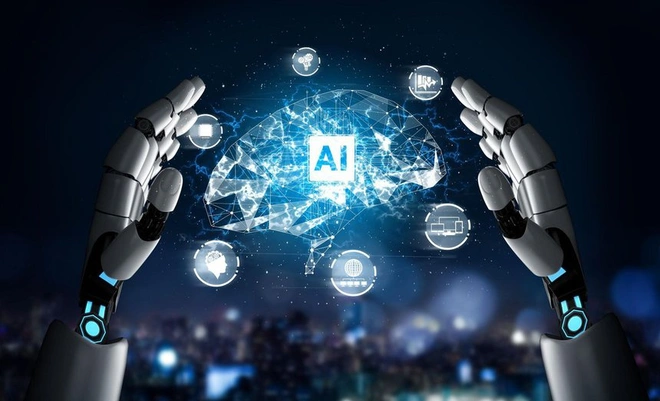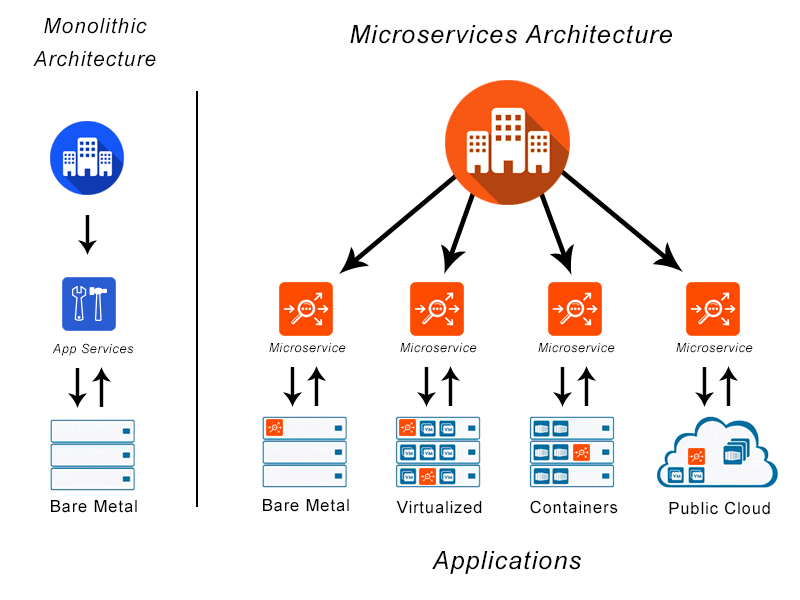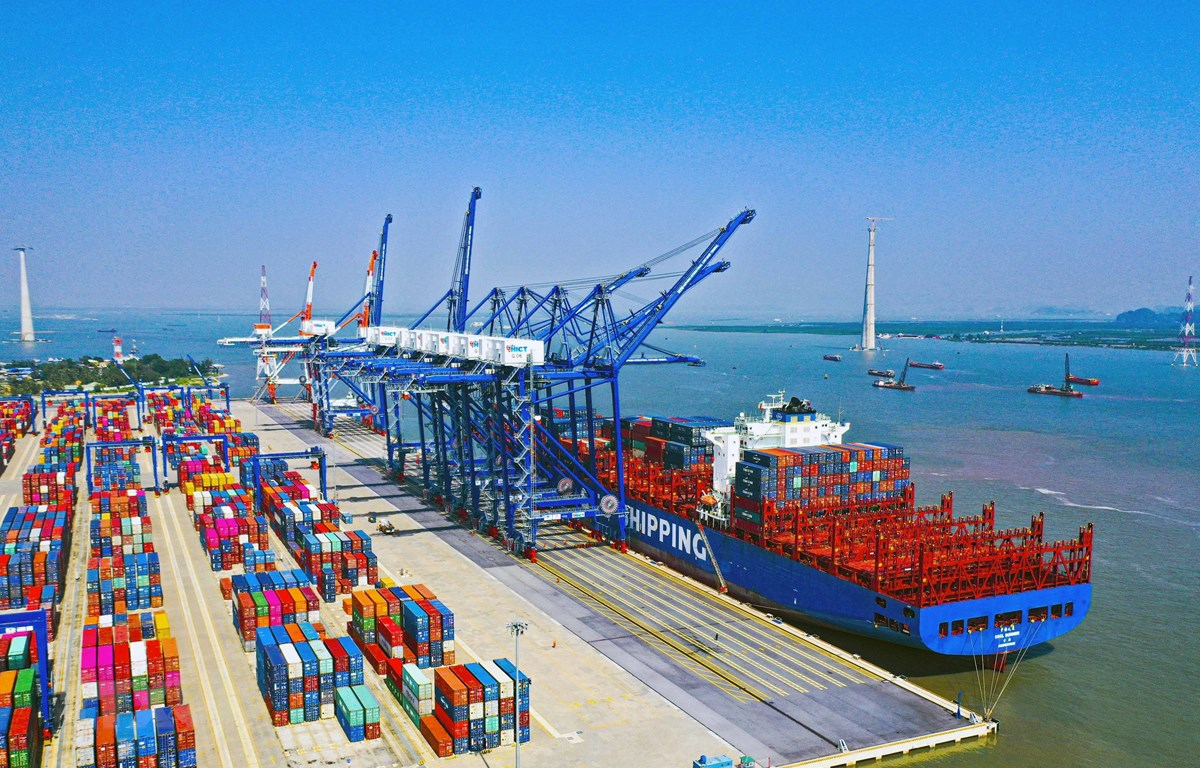What is digital transformation? All about digital conversion that you need to know
What is digital transformation?
Digital transformation is the process of using digital technologies to create – or modify – existing business processes, culture and customer experiences to meet changing market requirements and business. This reimagining of business in the digital age is digital transformation.
Digital transformation takes a customer-driven, digital-first approach to all aspects of a business, from business models and customer experiences to processes and operations. .
Digital transformation uses AI, automation, cloud and other digital technologies to leverage data and drive smart workflows, make faster and smarter decisions and react real-time to market disruptions. And finally, digital transformation changes customer expectations and creates new business opportunities.

Differentiate between digitization and digital transformation
Digitization and digital transformation are essentially activities of applying digital technology in operations, production and business activities to improve efficiency and save resources for businesses. However, there are still some significant differences between digitization and digital transformation in terms of human factors, implementation roadmap, basis of proposals and scale of benefits.
Digitization: This is an important part of digital transformation and building a foundation from digitization will be a prerequisite for successful digital transformation. Digitization simply continues the traditional way of working, but faster and better.
Digital transformation: Different from digitization, digital transformation will comprehensively change the way businesses operate and interact through the right strategy, the support of technology as well as the consensus of people.
Technology in digital transformation
Almost any digital technology can play some role in an organization's digital transformation strategy. But technologies that could play a central role now and in the near future include:
1. Artificial intelligence and automation
Artificial intelligence (AI) technologies, which allow a computer or machine to mimic the capabilities of the human mind. AI learns from examples, recognizes objects, makes decisions, and more.

AI can drive everything from innovative smart products, from increasingly personalized customer and user experiences to optimized workflows for supply chain management, change management .
2. Hybrid cloud
A hybrid cloud is a cloud infrastructure that connects on-premises IT resources, public clouds, and private clouds with orchestration, management, and application capabilities.
By creating a single, flexible cloud that is optimal for running any workload, and by not locking an organization into a single platform or provider, the cloud provides the flexibility, ability to The scalability and resilience needed for long-term success in digital transformation.
3. Microservices
Microservices is a cloud-native application architecture in which a single application consists of independently deployable components. Along with Agile or DevOps approaches, microservices are an engine for creating or combating digital disruption. It allows organizations to deploy new software or product features daily or sometimes hundreds or thousands of times a day.

4. Internet of Things
Internet of Things (IoT) are objects and devices equipped with sensors that collect and transmit data over the internet. IoT devices are where digital technology meets physical reality. Applications such as supply chain logistics and self-driving cars generate real-time data that AI and big data analytics applications translate into automation and decision making.

5. Blockchain (Blockchain)
Blockchain is a distributed, permanent and immutable ledger of electronic transactions.

Blockchain provides total transaction transparency to those who request it and is not accessible to those who do not. Organizations are using blockchain as the foundation for hyper-flexible supply chain transformations and cross-border financial services.
6. Digitization
Digitization is the transformation of information from paper into digital data. It is also the foundation of fundamental transformation initiatives in healthcare (electronic medical record or EMR), government and education. The core difference of digitization and digital transformation has also been mentioned above by CMC TS.
Some examples of digital conversion
There are many examples of successful Digital Transformation implementation in the world. A good example of digital transformation of the banking industry is JPMorgan Chase & Co. It is an American multinational investment bank and financial services holding company. The bank was incorporated in Delaware and has its headquarters in New York City.
As of December 31, 2021, JPMorgan Chase is ranked as:
- Ngân hàng lớn nhất Hoa Kỳ.
- Ngân hàng lớn nhất thế giới tính theo giá trị vốn hóa thị trường.
- Ngân hàng lớn thứ năm trên thế giới về tổng tài sản, với tổng tài sản lên tới 3.831 nghìn tỷ đô la Mỹ.
Before entering the digital transformation roadmap:
JPMorgan Chase & Co. encountered many difficulties related to work in law and credit. These jobs take up a lot of time and effort but do not directly generate revenue and easily cause data falsification.
One of the tough spots in the legal profession is document review, where corporate attorneys scour large chunks of data and organize and identify key pieces for the deal and the client. Attorney and credit officer for PMorgan Chase & Co. typically spends about 360,000 hours per year dealing with tasks, including interpreting commercial loan agreements.

Perform numeric conversion:
To solve this problem, JPMorgan has implemented a program called COiN, which stands for Contract Intelligence platform that uses unsupervised machine learning. This platform helps to minimize human involvement in the implementation process. The success of COiN is the result of many years of investment in key technology and human resources.
– JPMorgan has searched and approached the world's top AI talent. They expect people with an interest in the technologies, ethics, values, and vision to build something more important than what's currently available.
– In 2017, JPMorgan's total technology budget was 9% of projected revenue – double the industry average. By 2018, the bank will invest an additional 11 billion USD in new technology and 50,000 technology employees. In 2019, the bank also announced $350 million launching a five-year global initiative to prepare for the future of banking.
Result after numeric conversion:
The company has succeeded in cutting the time spent interpreting commercial loan contracts to seconds using machine learning. The algorithm should be able to extract around 150 relevant attributes from trade credit agreements annually in seconds compared to 360,000 hours of manual review by humans.
In addition to saving thousands of labor hours, the new software is proven to be more cost-effective, more efficient, and less error prone, promising new revenue streams with reduced risk.
In Vietnam, Saigon Newport is also a typical example in this field. As follows:
- Saigon Newport Corporation is occupying more than 50% market share of import and export goods via sea container across the country and 92% in the southern region.
- Saigon Newport has built the Eport electronic port application to support customers to make online payment transactions via personal domestic payment cards (ATMs) and corporate bank accounts (internet banking). This is also a tool to issue electronic invoices and deploy electronic delivery orders (eDO) with shipping lines.

- The system also helps customers and shipping lines reduce the steps of moving, receiving documents, and managing documents manually, especially during the Covid period. Eport application has been piloted at Cat Lai port, helping Tan Cang save time, labor and especially avoid many risks in delivery and transaction control: Average container delivery volume Increase 14.01%, check-in time at counters and gates 53.8% reduction.
So you know the overview of what digital transformation is, how is it applied, how is digital transformation in business, let's continue to learn about digital transformation!
Benefits of Digital Transformation
For the government
In the early stages, the national digital transformation makes the implementation and interaction between people and public services easier. In the medium and long term, the data obtained from the systematization of public services helps state agencies to overall and unify the services and activities of the society. Specifically, benefits can include:
- Improve publicity, transparency and accountability of the Government.
- Promote socio-economic development.
- Enhance security and social order.
- Increase access to health and education services for the people.
- Improve people's experience when using public services provided by the state.
In Vietnam, the Government has applied Digital Transformation for many public services. This helps people and businesses to interact directly with the government to solve arising tasks.
Among them, the online social insurance system can be mentioned. Now, policyholders can track the entire enrollment process as well as handle basic transactions on an online application instead of going to the insurance agency directly as before. These changes have contributed greatly to administrative reform and saving social resources.
To maintain and develop these achievements, the government needs to continue to plan overall digital strategies for the country, ensuring relevance and consistency with socio-economic development goals. On that basis, direct ministries, sectors, businesses to carry out overall digital transformation and connect at a national scale, in order to maximize the benefits of Digital Transformation.
For Businesses
Enterprises are one of the most obvious beneficiaries of digital transformation due to the degree of influence that digital technology brings to production and business activities. Digital technology is applied to promote key areas including optimizing operations, improving customer experience and finding and developing new business models.
Specifically, benefits can include:
- Narrow the gap between departments in the enterprise.
- Increase transparency and efficiency in the corporate governance system.
- Optimize employee productivity.
- Building digital businesses, improving competitiveness.
- Process optimization saves time, costs and resources
- Enhance customer experience
The digital transformation in enterprises is usually carried out according to a long-term roadmap. In the early stages of the road map, digital initiatives that help solve immediate problems and bring big impact are often prioritized for implementation. So, what is digital transformation in business, what is digital transformation for?
The most obvious example is the implementation of electronic office systems, electronic signatures to digitize internal exchange, interaction and approval operations. From there, the tools help increase work processing time, increase remote administration capabilities, save resources and make data transparent for businesses.
To be able to benefit and maintain the benefits that digital transformation brings, businesses need to determine the construction of a methodical digital transformation roadmap. At the same time, businesses need to ensure that the implementation of the roadmap is consistent with the set goals.
For consumers
Consumers are the indirect beneficiaries of government and business digital transformation activities. Specifically:
- Interactions with public services are conducted more smoothly and save time than the traditional one-stop phase.
- The experience when interacting with products and services of enterprises is also enhanced, bringing a higher quality of life for users.
- The number of consumers using digital apps is increasing day by day. They accept using these new technology applications as a daily routine.
- Accordingly, businesses need to improve the quality of digital services to build brands and attract customers. As a result, consumers get the best benefits.
A close example for improving the consumer experience is the story of ride-hailing applications such as Grab, Uber. Previously, with the traditional way of calling a car was quite time-consuming, users were passive in waiting and inconvenient in paying in cash.
Digital transformation 4.0 has created a technology ride-hailing model, completely changing the way consumers interact with drivers and transportation companies. Now, customers just sitting at home can actively call a car, know in advance the price, the estimated time and can pay conveniently through the linked e-wallets.
Overall digital transformation strategy and process
Businesses start by visualizing how many months or years of experience they want customers to have with their products and brand if they want them to become customers. This goal means that they must analyze their market, along with technology trends, to forecast or anticipate how customer needs or expectations may change and spot disruptive opportunities. broken.
Organizations then determine how they must transform their digital business from end to end, including infrastructure, product development, operations, and workflow. And finally, they bring the customer experience to life and improve it continuously in response to opportunity and change.
The basic Digital Transformation process includes 6 steps to help build a methodical and unified digital roadmap for the implementing unit:
Step 1: Define goals, direction and digital vision
This step helps to orient and precisely define the focus of the business strategy and digital transformation strategy. These goals act as a guide for the entire digital transformation roadmap.
Step 2: Assess the current situation and find the pain points
In order to deeply understand the painful problems in production and business activities, at the same time develop feasible solutions and measure the expected cost and effectiveness of the roadmap.
Step 3: Build a digital transformation roadmap, develop an appropriate set of digital initiatives
To exchange and unify digital initiatives on the digital transformation roadmap, and at the same time communicate the digital transformation roadmap for the whole enterprise.
Step 4: Implement the implementation according to the roadmap according to clear KPIs
To clearly define KPIs to track results, and at the same time to implement digital initiatives using the best technology in the fastest time.
Step 5: Evaluate and confirm the effect
Performance evaluation is achieved after a phase of implementing the digital transformation roadmap, with third-party validation if necessary.
Step 6: Report on performance and improvement
Implement performance reports, identify risks and changes that may affect the implementation of the digital transformation roadmap. From there, make the necessary improvements.
Factors for successful digital transformation
Besides a methodical digital transformation process, there are a number of key factors that play an important role in supporting effective digital transformation, including:
1. Culture and digital strategy
Digital strategy plays the role of leading the digital transformation roadmap in the right direction and business goals of enterprises. Along with that, the digital culture ensures consensus and the will to innovate to successfully implement the digital strategy.
Combining digital culture and strategy is paramount when implementing digital transformation. These factors need to be optimized through communication, training to raise awareness about digital transformation for leaders and employees in the enterprise.
2. Customer Engagement
Digital transformation to deliver a better customer experience that increases customer engagement and loyalty with the organization.
This is one of the driving forces behind digital transformation in businesses, which needs to come from a customer-centric mindset and figure out how to optimize the customer journey through digital technology. Thereby optimizing customer engagement in the digital transformation process.
3. Processes and improvements
Digital transformation is an activity based on the basic processes available at the enterprise. Apply digital transformation to bring digital technologies into the optimization of an existing process or completely change the way an existing process interacts. In order to optimize this factor, it is necessary to survey and detail the activities in each process in order to evaluate the inadequacies, transition points, etc., thereby giving appropriate digital solutions.
4. Technology
Technology is at the core of digital transformation. In the process of digital transformation 4.0, it is first necessary to evaluate the current level of digital technology application in enterprises. At the same time, based on the survey results to identify appropriate digital technologies applied at each stage of the roadmap. Combine the two factors above to get the current technology picture and the most suitable roadmap to the future.
5. Data analysis and management
Data is the gold store of the business. Successful data management and analysis helps businesses find new business opportunities, improve the quality of customer care, and make data-driven governance decisions. In the digital transformation process, businesses need to have a strategy for collecting, cleaning and analyzing data through building a unified digital platform.
Conclusion
The factors mentioned above are very important to ensure a successful digital transformation. However, to create cohesion between the elements in a methodical digital transformation roadmap, businesses need a consulting unit and provide appropriate digital transformation solutions, knowledgeable about Vietnamese culture and experienced. perform.
CMC TS is proud to be the TOP 1 unit in consulting and implementing Digital Transformation and Security solutions for organizations and businesses in Vietnam. CMC TS consults and implements comprehensive digital transformation: from infrastructure, applications, solutions for industry to security. In 2020-2021, CMC TS was selected by Hoa Phat Group as a comprehensive digital transformation strategic consulting partner for the 5-year period (2021-2025). In 2022, the Asian Notary Office (the top notary office in Ho Chi Minh City) also shook hands with CMC TS to build a digital transformation strategy and roadmap for a period of 3-5 years, towards becoming an Office. No. 1 notary in the market.
CMC TS is also a digital transformation companion of hundreds of large multi-industry organizations and enterprises in Vietnam. The special and distinctive feature of CMC TS's capacity is that CMC TS firmly grasps the needs, difficulties and potentials of businesses, has solid knowledge of the industry and technology - solutions. At the same time, after completing the digital transformation consulting project, CMC TS commits to accompany customers to meet monthly to evaluate the implementation process, provide expert personnel to support customers in real time. show the successful digital conversion route.
For detailed advice, please register in the form below!







